Cornstarch: Facts, Nutrition, And Potential Substitutes
While this household ingredient has a lot to offer, overconsumption can do more harm than good.
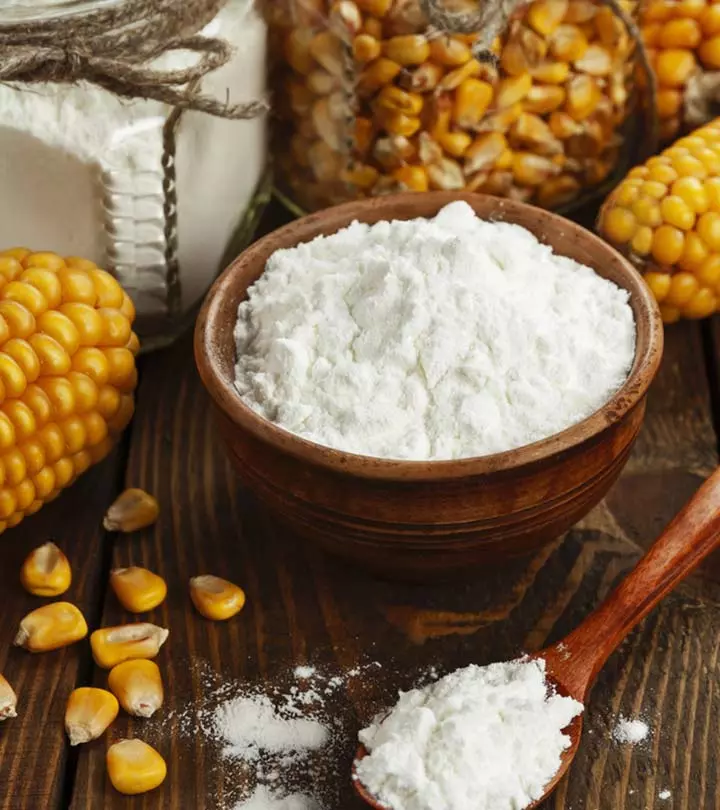
Image: Shutterstock
Cornstarch is one of the most widely used ingredients in the food industry and in most households. It comes to mind when you think of making thick gravies and soups. It is used in many industries, including health and bioplastics, for its adhesive properties. However, extensive use of cornstarch may have negative effects on health.
This article discusses the positives of cornstarch consumption, the risks, and other important information. Keep reading to find out.
 Know Your Ingredient: Cornstarch
Know Your Ingredient: CornstarchWhat Is It?
A fine, white powder obtained from corn kernels.
What Are Its Benefits?
It may stabilize blood sugar levels.
Who Can Consume It?
It is safe for all individuals, especially people with gluten intolerance.
How Often?
You can use 1 to 2 tablespoons of cornstarch for cooking daily.
Caution
Excessive consumption may cause swelling, hives, weight gain and increase the risk of hypertension and heart blockage.
In This Article
What Is Cornstarch?
Cornstarch is a fine powder derived from the endosperm of corn kernels.
The food processing industry uses it as a dairy substitute. It is also used to coat fried foods due to the crispy texture. It is also commonly used to thicken gravies, soups, sauces, and casseroles.
 Trivia
TriviaNutrition Profile of Cornstarch
Cornstarch does not possess a great nutrition profile as the corn kernels lose most nutrients while being processed to make cornstarch. The nutritional content in 100 g of cornstarch includes (1):
| Nutrient | Amount |
|---|---|
| Energy | 381 kcal |
| Protein | 0.26 g |
| Total fat | 0.05 g |
| Carbohydrates | 91.3 g |
Cornstarch contains less amount of iron, selenium, calcium, magnesium, manganese, sodium, phosphorus, potassium, and vitamins. So, is cornstarch bad for you? Well, excess use of cornstarch can cause side effects. We have discussed them in the next section.
Side Effects
Cornstarch is high in carbohydrates and energy, but it lacks essential nutrients. Using cornstarch in the diet is not advisable as it may cause the following side effects.
1. May Harm The Cardiovascular System
Cornstarch contains a good amount of carbohydrates and has a high glycemic index. It negatively affects cardiovascular health. Consuming ingredients with a high glycemic index may even lead to hypertension and blockages in the heart (2).
2. May Spike Blood Sugar Levels
The high glycemic level of carbohydrates and low fiber may increase blood sugar levels. A high glycemic index reduces insulin resistance, which results in the conversion of carbohydrates to glucose. Thus, blood sugar levels rise (2).
The fiber in the gut promotes good gut bacteria. It helps maintain proper glucose absorption into the bloodstream. Cornstarch does not contain good fiber. It gets easily digested and can spike blood glucose levels (3).
Tahlia, a blogger, shared a downside to using cornstarch while cooking. She writes, “Sometimes the moment I add the cornstarch into my gravy, it seizes up into large lumpy flakes (i).” She adds that there is not much one can do about it except spooning out the lumps. She recommends using the old butter/flour technique instead, especially if you are a beginner.
These are the major adverse effects of cornstarch. But cornstarch may also have certain advantages. Let’s explore them in the next section.
Benefits Of Cornstarch
1. Natural Cornstarch Is Gluten-free
Corn is naturally gluten-free. Since no other ingredient is added in its making, cornstarch is also gluten-free (4). It may help in preparing foods for those with gluten allergies.
 Did You Know?
Did You Know?2. May Help Improve Low Sugar Levels

Cornstarch contains carbohydrates with a high glycemic index. These could be good for those with low sugar levels. The carbs may help stabilize low sugar levels.
Note: Corn syrup is made from cornstarch. It also can stabilize low sugar levels (5). However, corn syrup (or cornstarch) alone may not exhibit this effect. One must also follow a diet containing the right nutrients to get the desired results.
Can Cornstarch Help In Reducing Weight?
No, cornstarch does not seem to help reduce weight. In fact, only slowly digestible starches may help reduce weight (6). Cornstarch, especially when consumed in excess, may lead to weight gain as it is a food high in starch content.
While cornstarch can be a good addition to thickening broths or soups, frequent and high use of cornstarch must be avoided.
6 Healthier Substitutes For Cornstarch
A few healthier substitutes that can replace cornstarch as a thickening agent are:
1. Arrowroot Powder
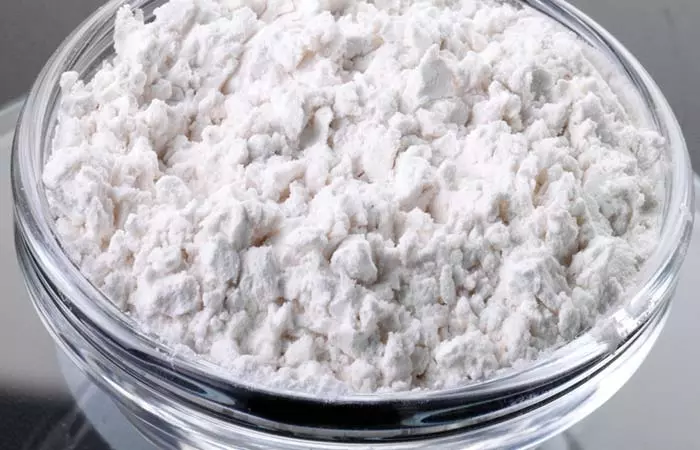
Arrowroot powder is the most commonly used substitute for cornstarch. It has medicinal properties. It contains dietary fiber that helps ease the gut and improve the digestive system. In addition, it also has nutrients like folate, potassium, and calcium, which can promote one’s overall health (7).
2. All-Purpose Wheat Flour (Unrefined)

All-purpose wheat flour is rich in carbohydrates and nutrients like protein, calcium, nitrogen, iron, magnesium, phosphorus, and potassium. In addition, wheat flour also has vitamins such as folate, riboflavin, thiamin, and niacin, which are required for many metabolic functions (8).
For example, folate is a very important vitamin that has a role in making genetic material and in the reproduction of cells. It is also essential for the proper growth and development of fetuses during pregnancy. Thus, it improves the health of both the mother and the baby (9).
3. Sorghum Flour

Sorghum flour is another great substitute for cornstarch as it is richer in protein. It also has antioxidants essential for fighting oxidative stress in the body’s cells, tissues, and organs (10). Sorghum flour also contains other minerals like iron, magnesium, phosphorus, and potassium. It has vitamins C and B6, thiamin, pantothenic acid, niacin, and riboflavin too (11). Magnesium is a very important mineral needed for calcium uptake by cells.
4. Tapioca Flour
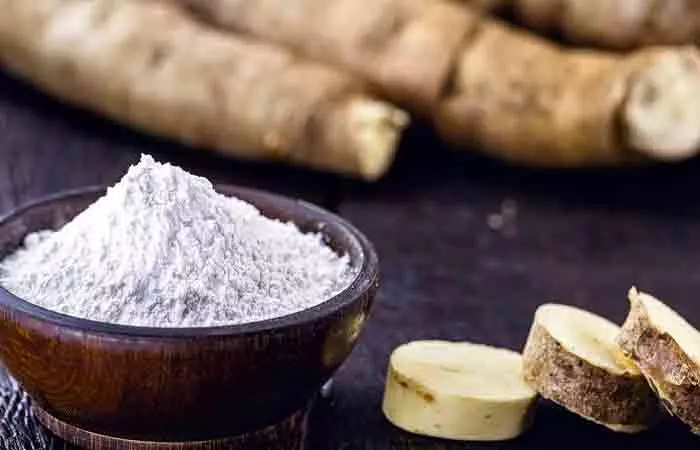
Tapioca or cassava root flour is an excellent replacement for cornstarch. Tapioca in itself is filled with carbohydrates (approx. 88.7 g per 100 g of tapioca), nutrients, and has a small amount of dietary fiber (0.9 g per 100 g of tapioca).
In addition, the presence of essential nutrients like calcium (20 mg), iron (1.58 mg), potassium (11 mg), phosphorus, zinc, and selenium (in trace amounts) makes tapioca flour a healthy addition to the diet (12).
Carbohydrates in tapioca flour have a low glycemic index. Tapioca may help regulate the sugar levels in people with diabetes. It may help in weight loss, too, as the fiber promotes good gut bacteria. The bacteria promote the proper digestion of carbohydrates. Hence, tapioca can help reduce the storage of undigested carbohydrates in the body’s fatty tissues (13).
5. Rice Flour
Rice flour is often used as a substitute for cornstarch in many Asian countries. Besides being a staple in these countries, rice also has many essential nutrients.
Unenriched, white rice flour has phosphorus (94 mg), potassium (75 mg), magnesium (22.9 mg), and calcium (6 mg). It also has vitamins B1, B3, B6, B9, and B12, along with riboflavin.
Riboflavin is essential for producing red blood cells in the body and releasing energy from proteins (14). It also acts as an antioxidant in the immune system and helps in reducing oxidative stress on cells.
6. Potato Starch
Potato starch, like cornstarch, is gluten-free. It imparts a smoother texture to dishes compared to the gel-like consistency of cornstarch. Potato starch is a good source of dietary fiber as well as a resistant starch, making it beneficial for digestive health (15). Resistant starch does not break down during the digestion process and gets fermented in the large intestine to provide food for good bacteria, thus promoting gut health (16). It may also improve insulin sensitivity, reduce the risk of obesity, and aid in managing high blood glucose levels. All in all, potato starch makes a great substitute for cornstarch.
Conclusion
Cornstarch is a good thickening agent but does not carry any significant nutritional value. It could increase the risk of cardiovascular disease if consumed in excess. In addition, it is not good for people with diabetes because of its high glycemic index.
If you think of replacing cornstarch with another plant-based thickener, you may consider arrowroot, sorghum, rice, wheat, or tapioca flours. Let the thickener you choose also add some nutritional value to your dish.
Frequently Asked Questions
Is cornstarch Keto-friendly?
No, cornstarch has a good amount of carbs to be considered keto-friendly.
Can I use almond flour instead of cornstarch?
Yes, almond flour makes for a good low-carb, gluten-free substitute for cornstarch. You can substitute it in equal measures.
Can cornstarch be used as a substitute for talcum powder?
Cornstarch is a fantastic natural and eco-friendly substitute for talcum powder that works just as well to absorb moisture, which lacks the strong chemical aroma often found in talcum powder.
Can cornstarch be harmful if inhaled?
When inhaled, starch can cause breathing trouble, fast breathing, shallow breathing, and even chest pain.
Can we eat corn flour daily?
Corn flour can enhance the flavor of your food, but too much of it is unhealthy. If used in large quantities, it can cause high blood pressure. So, proceed with caution!
Is cornstarch safe to use on hair?
Cornstarch is an excellent ingredient for your hair! Moisturizing properties: Because of its hygroscopic properties, it will nourish the hair by making it soft and smooth, shinier, and silkier.
Is cornstarch good for oily hair?
Corn starch absorbs the grease and condensation, keeping your scalp and hair smelling and looking clean. Additionally, unlike other powders, it feels silky smooth rather than thick or cakey.
Key Takeaways
- Cornstarch does not have a great nutritional profile as most nutrients are lost during processing.
- It may harm the cardiovascular system and increase blood sugar levels.
- Cornstarch consumed in excess may lead to weight gain.
- The benefits of cornstarch include improving low sugar levels and being gluten-free.
Illustration: Is Cornstarch Nutritious Or Harmful To Health?

Image: Stable Diffusion/StyleCraze Design Team
Curious to know more about the effects of corn starch on your health? Watch this insightful video on the potential risks of eating too much corn starch.
Personal Experience: Source
StyleCraze's articles are interwoven with authentic personal narratives that provide depth and resonance to our content. Below are the sources of the personal accounts referenced in this article.
i. My cooking tips for people who never cookhttps://missmystra.wordpress.com/2017/08/12/my-cooking-tips-for-people-who-never-cook/
References
Articles on StyleCraze are backed by verified information from peer-reviewed and academic research papers, reputed organizations, research institutions, and medical associations to ensure accuracy and relevance. Read our editorial policy to learn more.
- Cornstarch
https://fdc.nal.usda.gov/fdc-app.html#/food-details/169698/nutrients - Dietary Carbohydrates and Cardiovascular Disease Risk Factors in the Framingham Offspring Cohort
https://www.ncbi.nlm.nih.gov/pmc/articles/PMC5062606/ - Effects of Dietary Fiber and Its Components on Metabolic Health
https://www.ncbi.nlm.nih.gov/pmc/articles/PMC3257631/ - Starch Characteristics Linked to Gluten-Free Products
https://www.ncbi.nlm.nih.gov/pmc/articles/PMC5409317/ - Low Blood Glucose (Hypoglycemia)
https://www.niddk.nih.gov/health-information/diabetes/overview/preventing-problems/low-blood-glucose-hypoglycemia - Starches, Sugars and Obesity
https://www.ncbi.nlm.nih.gov/pmc/articles/PMC3257742/ - Arrowroot Flour
https://fdc.nal.usda.gov/fdc-app.html#/food-details/170684/nutrients - Flour, wheat, all-purpose, enriched, unbleached
https://fdc.nal.usda.gov/fdc-app.html#/food-details/789951/nutrients - Folate
https://ods.od.nih.gov/factsheets/Folate-Consumer/ - Effect of sorghum consumption on health outcomes: a systematic review
https://pubmed.ncbi.nlm.nih.gov/27694643/ - Sorghum flour, refined, unenriched
https://fdc.nal.usda.gov/fdc-app.html#/food-details/173262/nutrients - Tapioca, pearl, dry
https://fdc.nal.usda.gov/fdc-app.html#/food-details/169717/nutrients - Attenuation of glycaemic and insulin responses following tapioca resistant maltodextrin consumption in healthy subjects: a randomised cross-over controlled trial
https://www.ncbi.nlm.nih.gov/pmc/articles/PMC7372190/ - Riboflavin
https://medlineplus.gov/ency/article/002411.htm#:~:text=Riboflavin%20(vitamin%20B2)%20works%20withrelease%20of%20energy%20from%20proteins. - Resistant Starch: Promise for Improving Human Health
https://www.ncbi.nlm.nih.gov/pmc/articles/PMC3823506/ - Role of Resistant Starch in Improving Gut Health, Adiposity, and Insulin Resistance
https://www.ncbi.nlm.nih.gov/pmc/articles/PMC4352178/
Read full bio of Jesse Feder
Read full bio of Ravi Teja Tadimalla
Read full bio of Payal Karnik






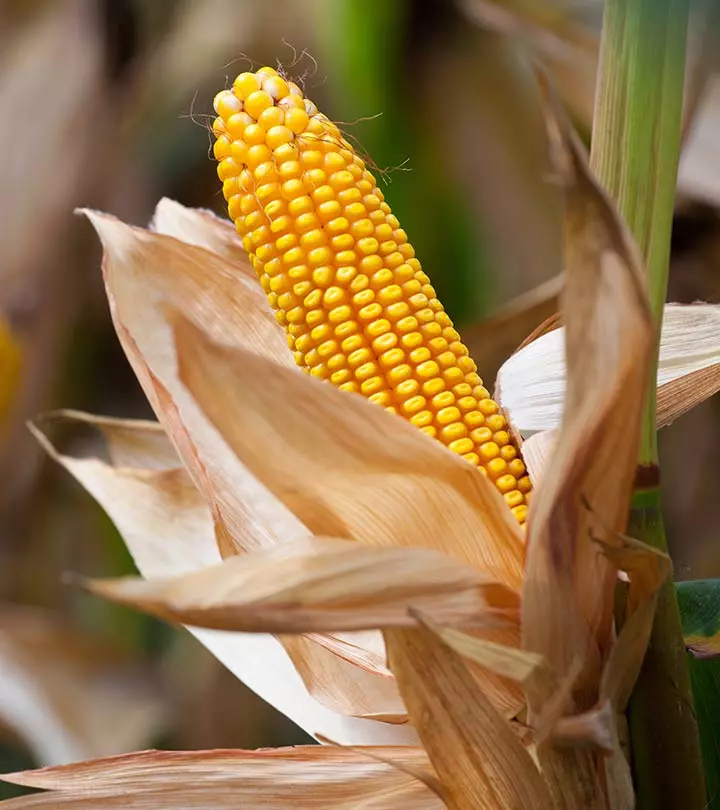
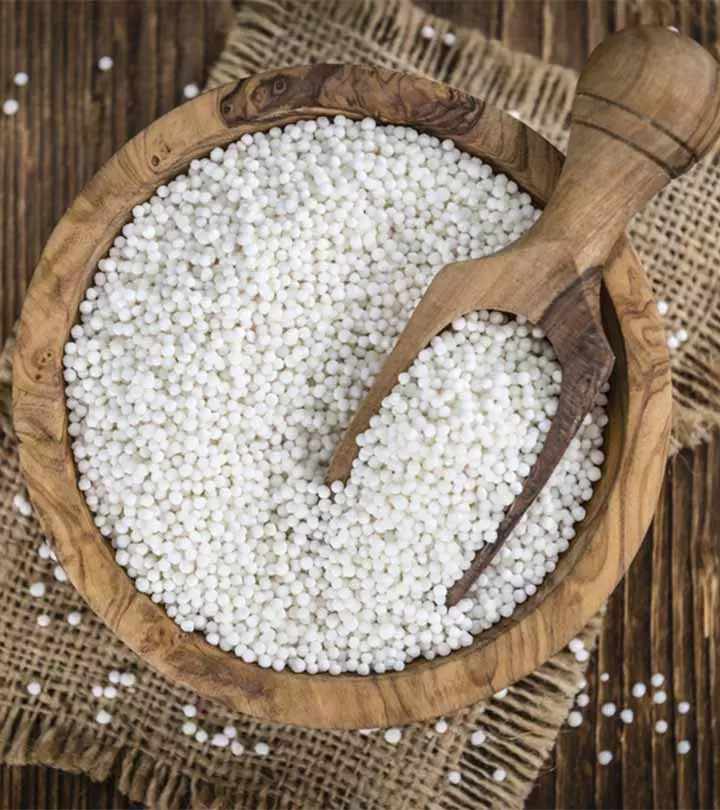

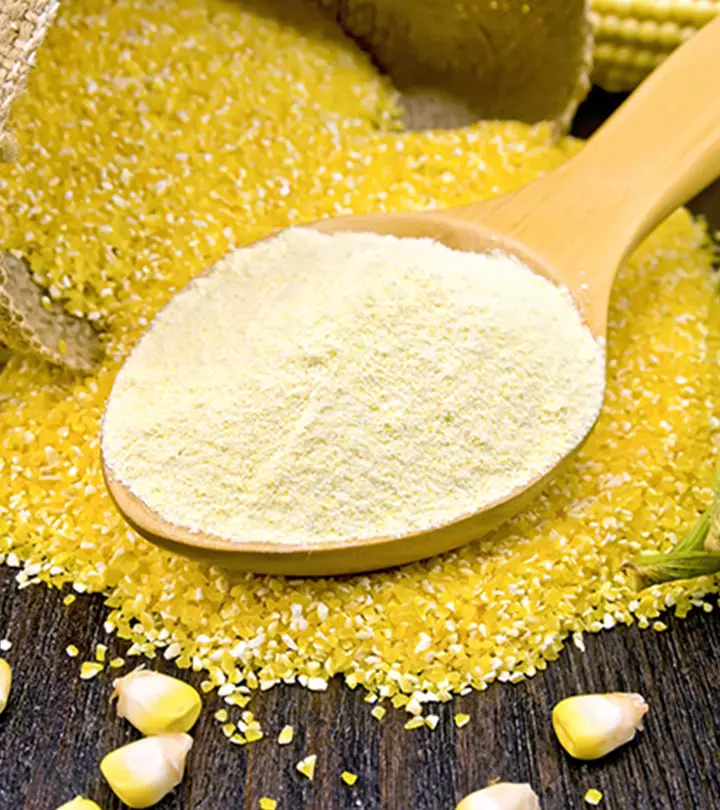


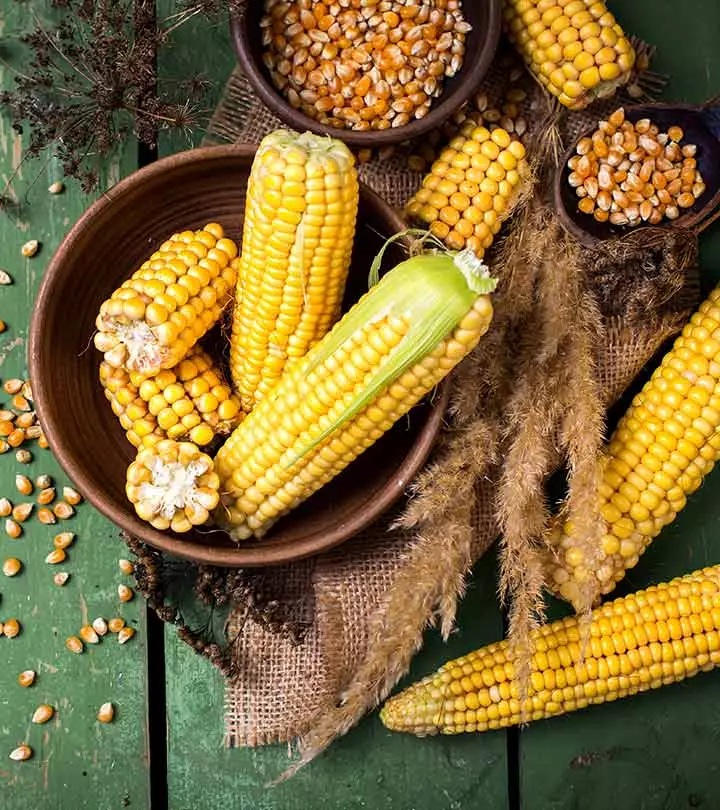
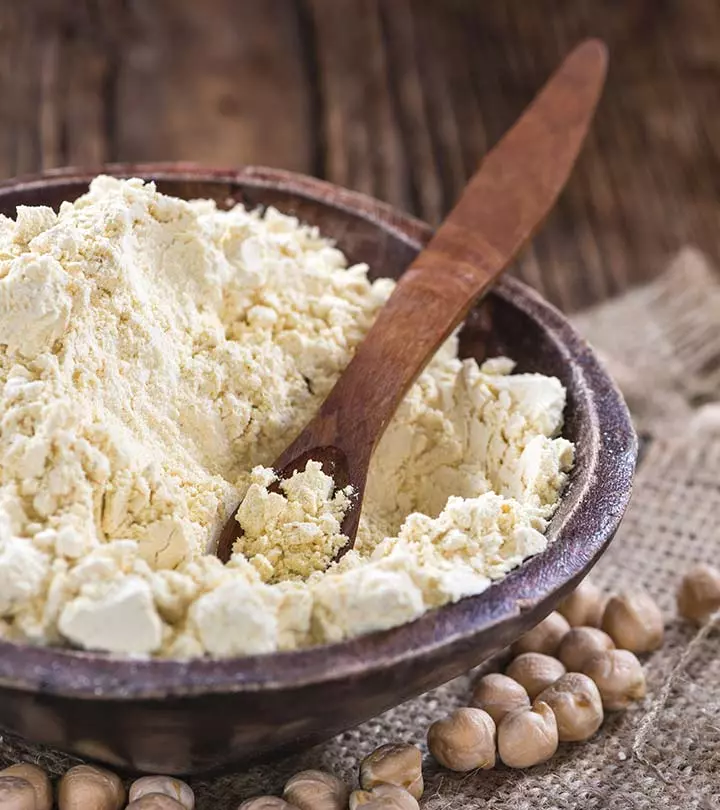
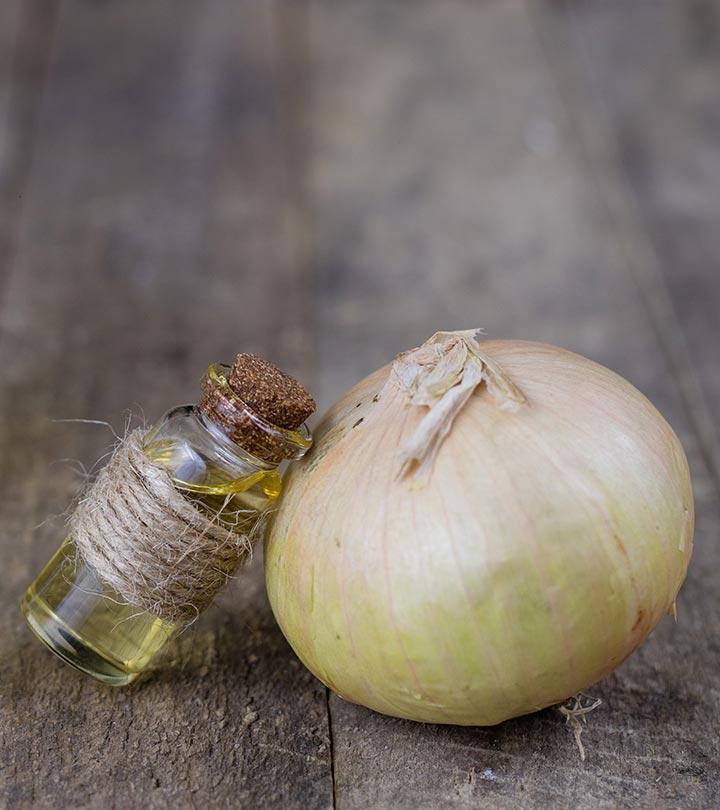
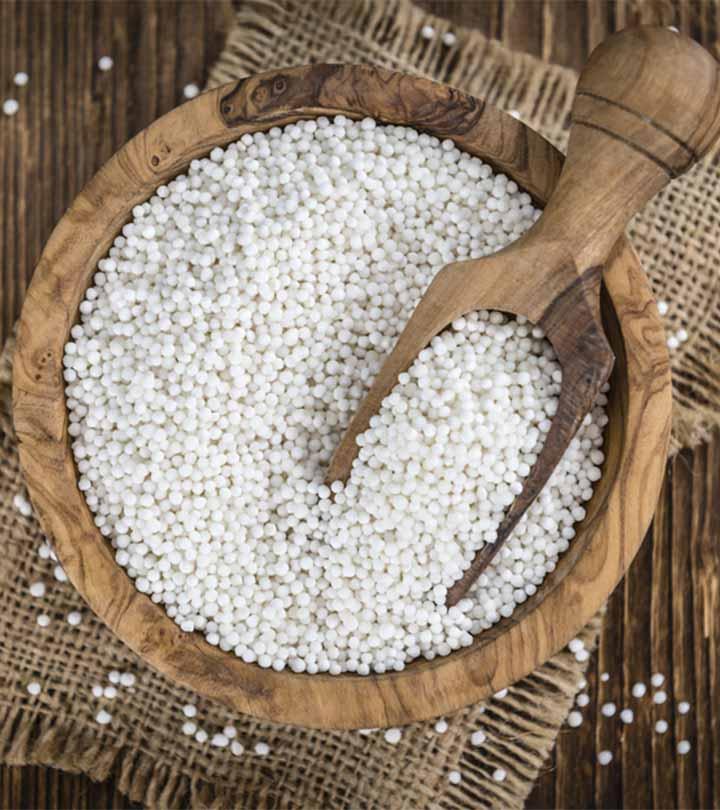
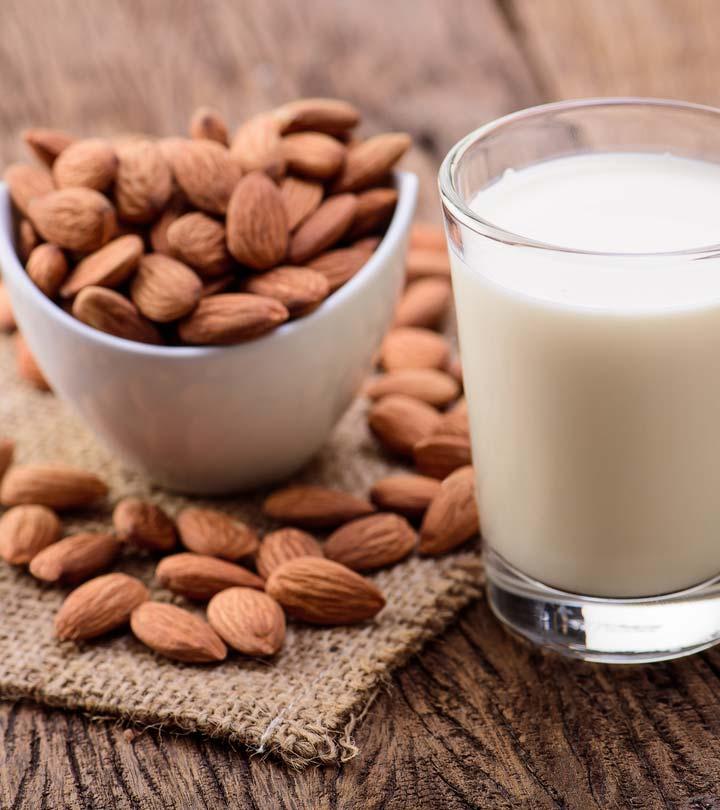
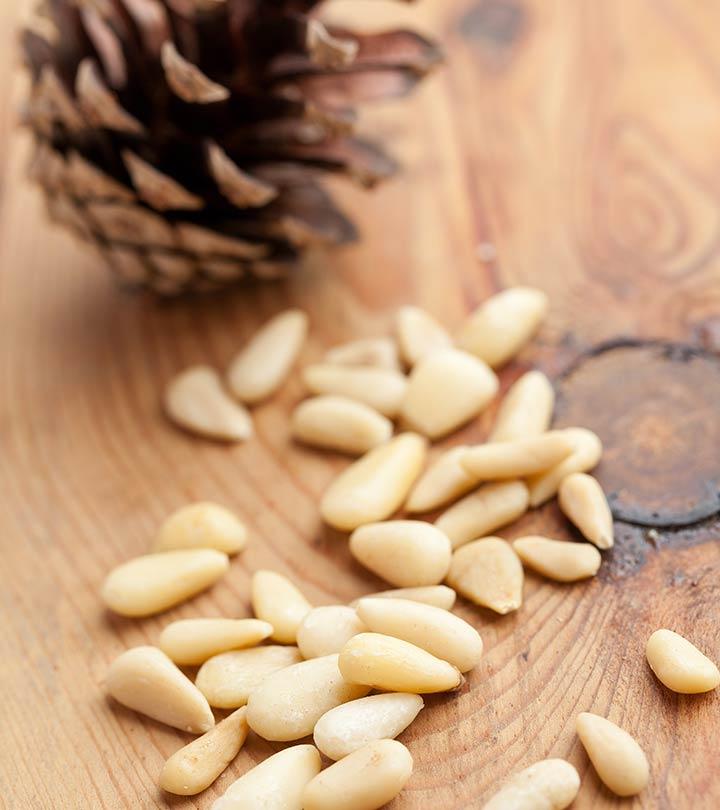
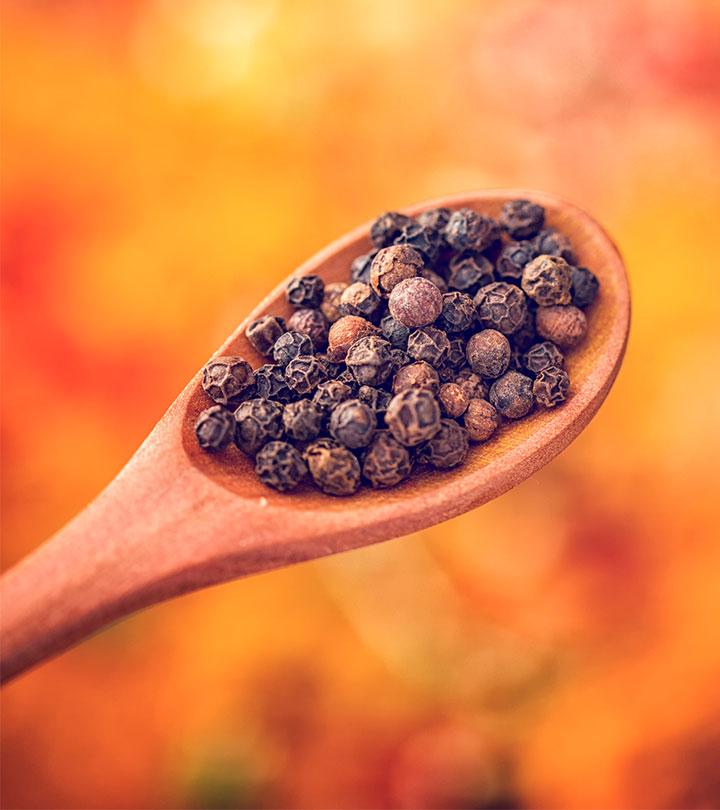
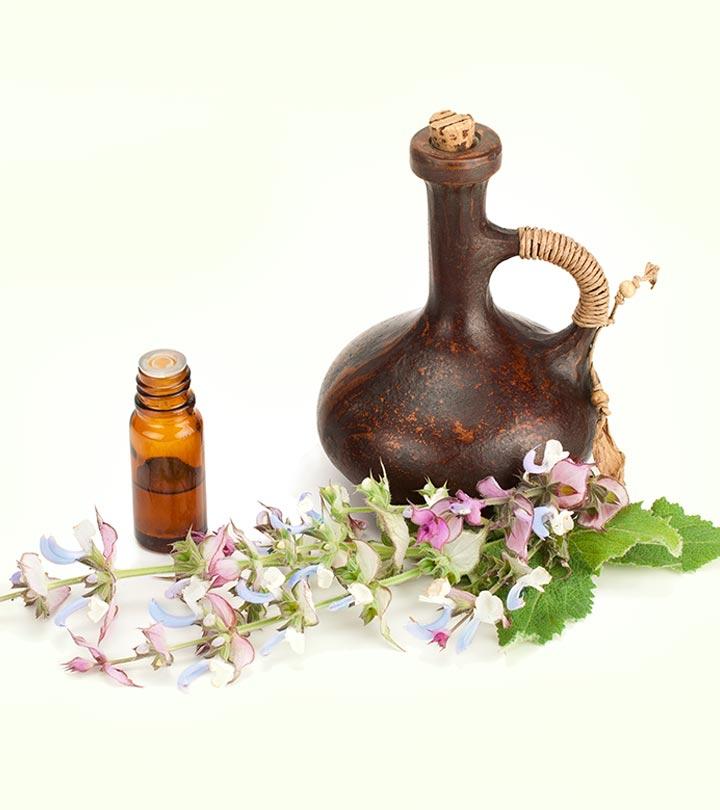
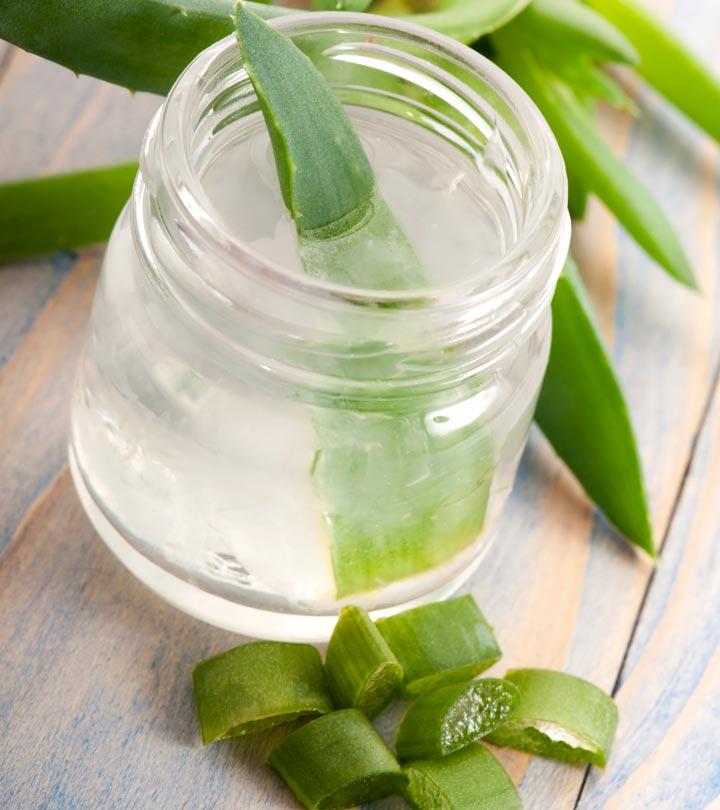
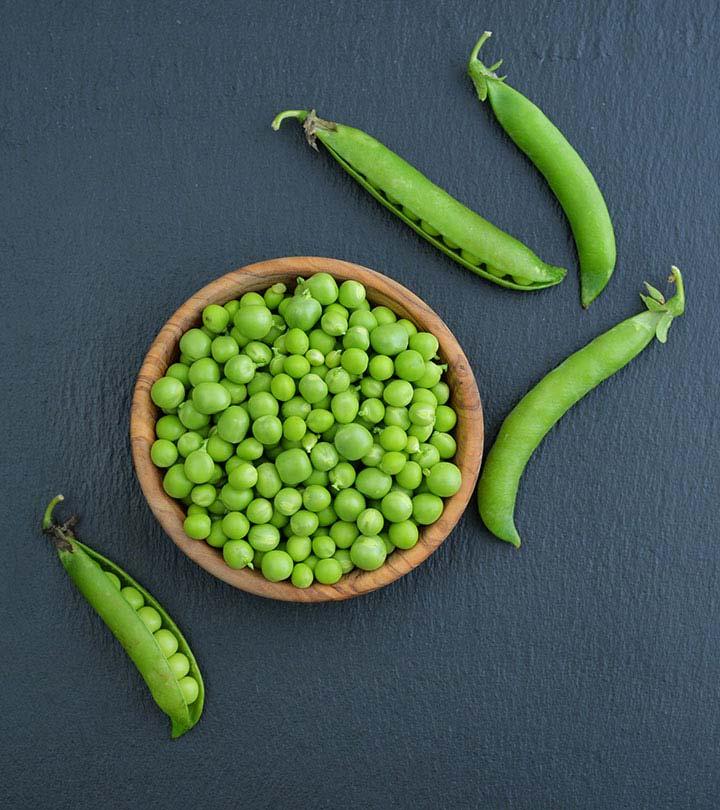
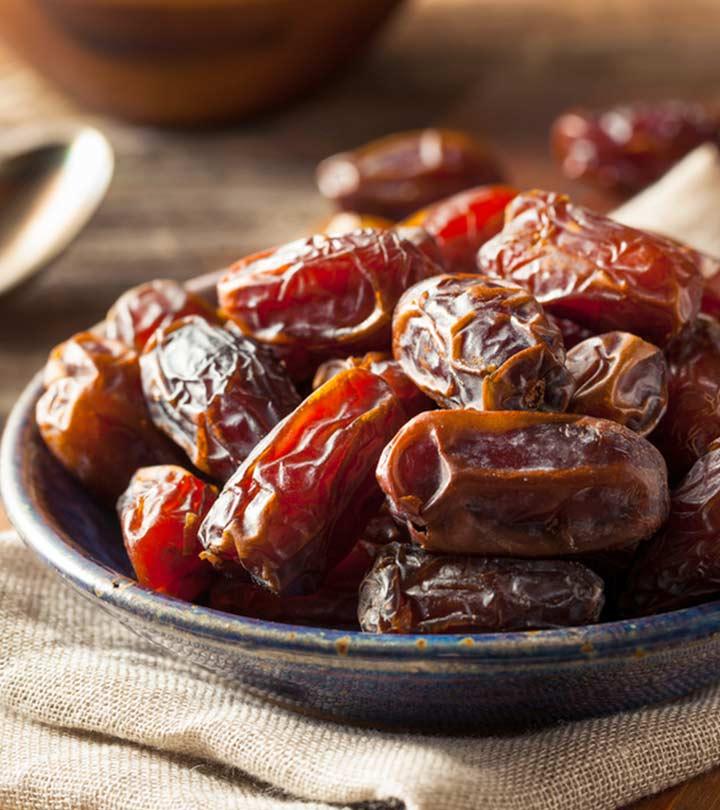
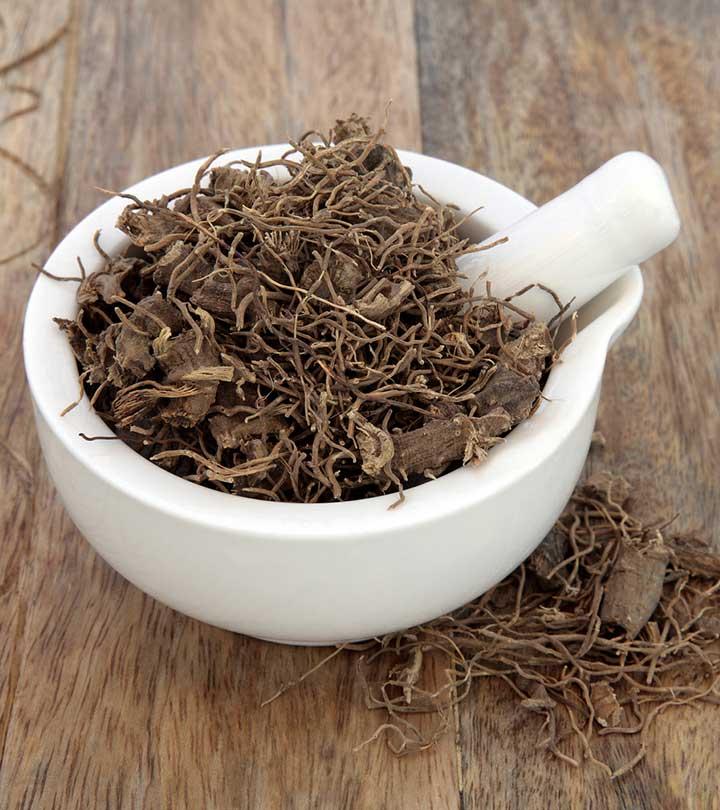
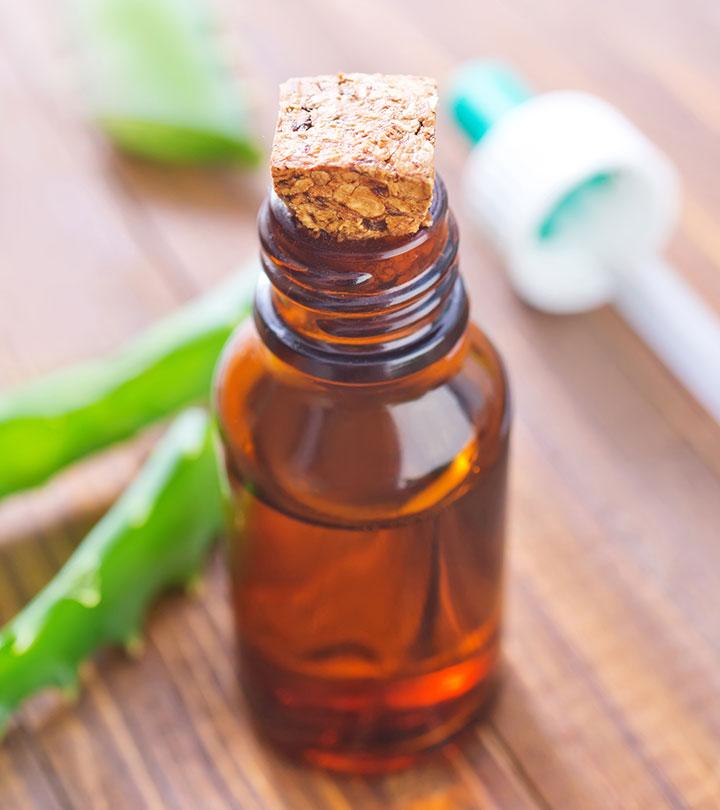

Community Experiences
Join the conversation and become a part of our empowering community! Share your stories, experiences, and insights to connect with other beauty, lifestyle, and health enthusiasts.